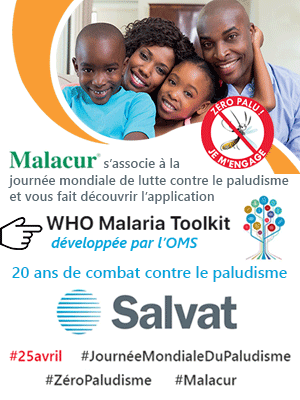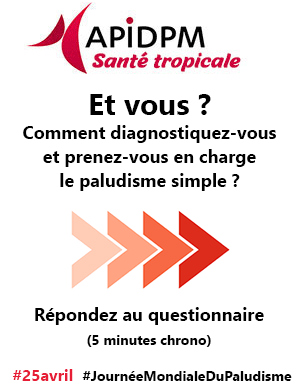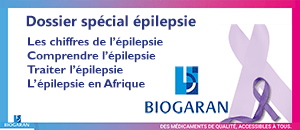← retour Santé tropicale
Accès aux sites pays ![]()
![]() BENIN
BENIN![]() BURKINA FASO
BURKINA FASO![]() CAMEROUN
CAMEROUN![]() CENTRAFRIQUE
CENTRAFRIQUE![]() CONGO
CONGO![]() COTE D'IVOIRE
COTE D'IVOIRE![]() GABON
GABON
![]() GUINEE
GUINEE![]() MADAGASCAR
MADAGASCAR![]() MALI
MALI![]() R.D. CONGO
R.D. CONGO![]() SENEGAL
SENEGAL![]() TOGO
TOGO
← retour Santé tropicale
Accès aux sites pays ![]()
![]() BENIN
BENIN![]() BURKINA FASO
BURKINA FASO![]() CAMEROUN
CAMEROUN![]() CENTRAFRIQUE
CENTRAFRIQUE![]() CONGO
CONGO![]() COTE D'IVOIRE
COTE D'IVOIRE![]() GABON
GABON
![]() GUINEE
GUINEE![]() MADAGASCAR
MADAGASCAR![]() MALI
MALI![]() R.D. CONGO
R.D. CONGO![]() SENEGAL
SENEGAL![]() TOGO
TOGO

Publié dans Médecine d'Afrique Noire 7103 - Mars 2024 - pages 151-158
 Néphrostomie percutanée en urgence dans les rétentions hautes d’urines. Quelles indications devant le développement de l’endo-urologie
Néphrostomie percutanée en urgence dans les rétentions hautes d’urines. Quelles indications devant le développement de l’endo-urologieAuteurs : M. Ndiaye, T.O. Diallo, N.S. Ndour, A. Sarr, A. Thiam, B. Sine, C.Z. Ondo, O. Sow, A. Ndiath, E.H.M. Diaw, Y. Sow, B. Diao, P.A. Fall, A.K. Ndoye - Sénégal
Contexte : La néphrostomie percutanée (NPC) est l’une des techniques de dérivation des urines contenues dans les cavités rénales. Cette technique reste indiquée de nos jours devant certaines uropathies obstructives non accessible au drainage internes des cavités rénales par une sonde JJ ou sonde urétérale. L’objectif de cette étude était de mettre en exergue notre pratique de néphrostomie percutanée dans les rétentions hautes d’urine en décrivant la technique et évaluer ses indications, leur résultat et leur morbidité dans notre service.
Patients et méthode : Il s’agissait d’une étude transversale, descriptive et concentrique se portant sur les patients ayant eu une néphrostomie percutanée indiquée pour une rétention haute d’urine dans notre service sur une période de 30 mois (1er janvier 2017 au 30 juin 2019). Les paramètres étudiés étaient : l’effectif, l’âge, le sexe, la latéralité, la créatininémie avant et après la néphrostomie, le grade de l’hydronéphrose, les indications de la néphrostomie, le type d’anesthésie, les résultats globaux et les complications et leur prise en charge. Les résultats étaient jugés : réussite ou échec en fonction que la sonde de néphrostomie soit ou pas dans les cavités pyélo-calicielles et drainant des urines.
Résultats : Soixante-douze patients ont été inclus. Le nombre total de néphrostomie était de 87. L’âge moyen était de 48,4 ± 18,4 ans (6 et 88 ans). Le sex-ratio était de 1,7. La néphrostomie droite était plus fréquente (44,4%). La néphrostomie était bilatérale chez 21% des patients. Le grade IV de la dilatation des cavités pyélo-calicielles était plus observé (44,4%), suivi du grade III (38,9%). La médiane de la créatininémie avant la néphrostomie était de 18 mg/L (4,2 mg/L et 199 mg/L). Les pathologies bénignes étaient les indications les plus fréquentes (58,3%). Soixante-huit patients (94,4%) avaient une anesthésie locale. Quatre patients (5,6%) avaient une anesthésie générale. Le taux de réussite était de 87,4% (76) et le taux d’échec de 12,6% (11) des patients. Les complications les plus fréquentes étaient les hémorragies mineures, les drains de néphrostomie bouchés et les chutes de la sonde de néphrostomie. La médiane de la créatininémie de contrôle après un recul de 7 jours était de 13 mg/L (4,2 mg/L et 211 mg/L).
Conclusion : La NPC garde toutes ses indications dans nos régions où le développement de l’endo-urologie n’est qu’à un état embryonnaire. En effet nos résultats montrent un taux de réussite satisfaisante avec un nombre de complication acceptable malgré nos conditions de travail.
Background: Percutaneous nephrostomy is one of the techniques for diversion of urine contained in the renal cavities. This technique remains indicated today for certain obstructive uropathies not accessible to internal drainage of the renal cavities by a JJ stent or ureteral stenting. The objective of this study was to highlight our practice of percutaneous nephrostomy in high urinary retention by describing the technique and to evaluate its indications, their result, and their morbidity in our service.
Patients and method: This was a cross-sectional, descriptive, and concentric study of patients who had percutaneous nephrostomy indicated for high urinary retention in our department over a period of 30 months (January 1st, 2017, to June 30th, 2019). The parameters studied were: number, age, sex, laterality, serum creatinine before and after nephrostomy, grade of hydronephrosis, indications for nephrostomy, type of anesthesia, overall results and complications and their management. The results were judged: success or failure depending on whether or not the nephrostomy probe was in the pyelo-calicielles cavities and draining urine.
Results: Seventy-two patients were included. The total number of nephrostomies was 87. The mean age was 48.4 ± 18.4 years (6 and 88 years). The sex ratio was 1.7. Right nephrostomy was more common (44.4%). nephrostomy was bilateral in 21% of patients. Grade IV of the dilation of the pyelocaliceal cavities was more observed (44.4%), followed by grade III (38.9%). The median serum creatinine before nephrostomy was 18 mg/L (4.2 mg/L and 199 mg/L). Benign pathologies were the most frequent indications (58.3%). Sixty-eight patients (94.4%) had local anesthesia. Four patients (5.6%) had general anesthesia. the success rate was 87.4% (76) and the failure rate was 12.6% (11) of patients. The most common complications were minor bleeding, blocked nephrostomy drains and nephrostomy tube fallout. The median control serum creatinine after a 7-day follow-up was 13 mg/L (4.2 mg/L and 211 mg/L).
Conclusion: The NPC keeps all its indications in our regions where the development of endourology is only at an embryonic state. Indeed, our results show a satisfactory success rate with an acceptable number of complications despite our working conditions.
Cet article est actuellement coté ![]() (1,0 étoiles) par les abonnés de Médecine d'Afrique Noire.
(1,0 étoiles) par les abonnés de Médecine d'Afrique Noire.
Il a été consulté 392 fois, téléchargé 17 fois et évalué 1 fois.
Aucun commentaire n'a encore été ajouté à propos de cet article
Restez informés : recevez, chaque mercredi, la lettre d'informations de Santé tropicale. Inscriptions
Ce contenu gratuit vous est destiné :







![]() Adresse
Adresse
![]() Téléphone
Téléphone
![]() Contactez-nous
Contactez-nous
Actualités
Articles médicaux